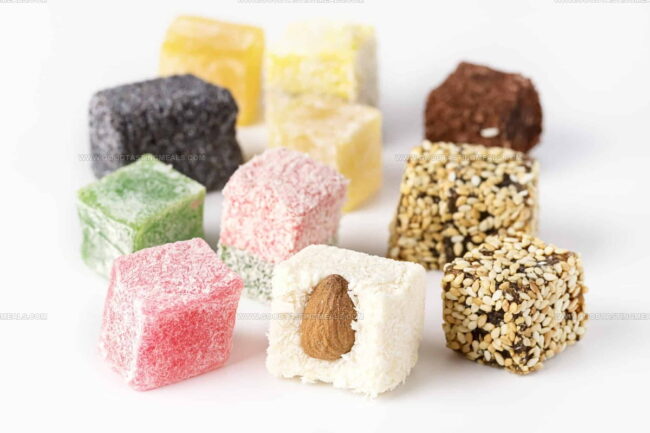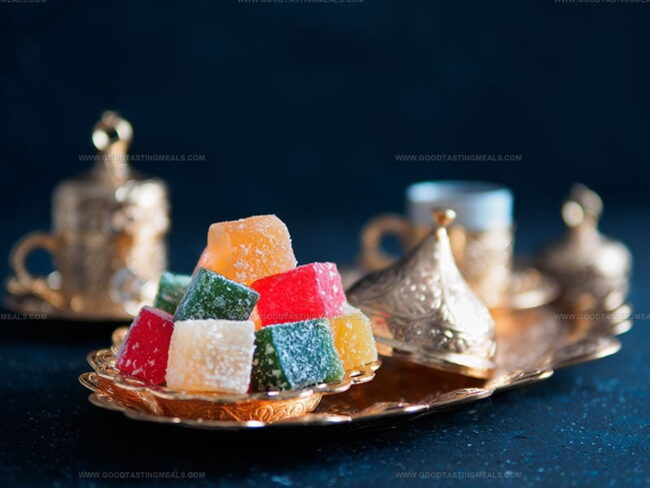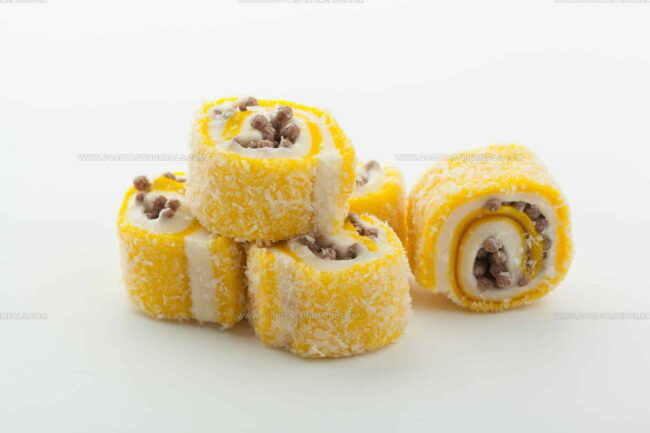What Does Turkish Delight Taste Like? A Sweet Mystery Unboxed
Turkish delight has captivated taste buds and sparked culinary curiosity for centuries.
This sweet treat from the heart of Turkey carries a rich cultural heritage that extends far beyond its delectable reputation.
Countless people wonder about the mysterious flavor profile of this unique confection.
Soft, fragrant, and steeped in tradition, Turkish delight represents more than just a simple dessert.
Its intricate preparation methods and diverse variations intrigue food enthusiasts worldwide.
Generations have passed down recipes that transform simple ingredients into a sensory experience unlike any other confectionery.
Unraveling the sensory secrets of Turkish delight promises a delightful journey into a world of sweet complexity that will tantalize your palate and transport you to the vibrant streets of Istanbul.
What Is Turkish Delight?
Sweet Turkish delight, called lokum, started as a sugary gel snack made from sugar and starch.
Delicate treats come in many flavor choices like almonds, citrus, and rose water.
Rose-colored rose flavor stands out as most beloved, while pistachio and walnut versions also charm taste buds.
Middle Eastern regions love this snack, and its popularity spreads worldwide.
Soft, chewy squares mix corn starch and sugar with dry fruits, honey, or nuts.
Special binding ingredients create sticky textures that make these treats unique.
Shoppers find cubes covered in powdery sugar with classic almond and rose flavors.
Adventurous snackers can sample wild options like fruity Turkish blends, coconut, and hazelnut selections that keep taste experiences interesting.
Flavor of Turkish Delight
Sweet gel-like treat from Turkey starts with starch and sugar.
Makers can add honey or molasses to create different flavors.
Workers cut the finished gel into small cubes and coat them with powdered sugar, coconut, or nuts.
Hazelnut paste works well as a topping for these tasty morsels.
Makers use many ingredients to craft unique flavor combinations.
Rosewater brings a soft rose scent while orange flower water adds a zesty citrus note.
Both waters give Turkish delight a light floral smell that makes them special.
My expectations for this sweet snack were low at first.
Sweets aren't usually my top choice for snacking.
Licorice has always been my go-to chewy treat.
Something changed when I tried rose-flavored Turkish delight for the first time.
Unexpected flavors and wonderful chewy texture caught me by surprise.
Boxes of these treats looked large but contained only a few pieces.
My disappointment quickly turned to excitement.
One version had peanuts and pistachios and felt similar to nougat.
Both kinds tasted amazing and left me wanting more.
Types of Turkish Delight
Turkish delight comes in many varieties.
Get to know the most popular types and what makes each one unique.
Pistachio Flavor
Turkey stands out as a top pistachio nut producer worldwide, which explains why Turkish delight comes in countless cubes and rolls sporting different shapes, sizes, and flavors - often decorated or coated with delightful green pistachios.
Rose Flavor
Sweet rose-scented treats offer memories of Istanbul's rich flavor. Rose-colored cubes soaked in rosewater and dusted with powdery sugar fill candy shops across the region.
Spice bazaars showcase another special version - delicate rolls drizzled with honey and sprinkled with delicate dried rose petals. Travelers can find these soft confections as a delightful reminder of their journey through Turkey's magical streets and markets.
Lemon Flavor
Savor sweet and tangy lemon lokum that sparks taste buds with classic Turkish delight magic.
Zesty notes dance across your tongue, creating a delightful flavor experience that captures traditional sweet-making skills.
Pomegranate Flavor
Pomegranate magic spreads across Turkey with countless delicious treats.
Sweet molasses, smooth drinks, rich tea, and traditional Turkish delight showcase this beloved fruit's incredible charm.
Many local snacks feature pomegranate flavors decorated with crunchy dried barberries or sprinkled with smooth pistachio pieces.
Coconut Flavor
Coconut Turkish delight brings sweet happiness in delightful rolls packed with tasty fillings like chopped nuts and creamy Nutella.
Soft candy treats blend smooth textures with rich flavor combinations that melt in your mouth and make snack time special.
Turkish Delight Health Benefits
Turkish delight supports removing harmful substances from the body and potentially helps with skin health for those managing kidney concerns.
Sweet Turkish pleasure contains nutrient-dense ingredients like almonds and coconut.
Modest portions make an excellent alternative when wanting something sweet during tea time, balancing between enjoyment and wellness without excessive sugar consumption.
How to Make Turkish Delight at Home
Making Turkish delight at home is easier than you think.
Follow these steps to whip up your own authentic batch.
What You Need
How To Prepare It
How To Store It
Turkish delight stays most delicious when fresh from preparation.
Store squares in an airtight container using waxed paper between layers.
Sprinkle extra powdered sugar on sides just before serving to keep its perfect texture and sweet taste.
Pairing Turkish Delight with Teas and Coffees
Pairing Turkish delight with teas and coffees is a simple way to make snack time feel special:
Is Turkish Delight an Acquired Taste?
Sweet Turkish candy needs a special palate to enjoy.
Wobbly and colorful, this treat sits between marshmallows and gelatin desserts.
Someone might find the texture strange at first touch.
Rose water gives the candy its unique flavor, which could be challenging for new taste buds.
Some recipes demand generous amounts of this delicate ingredient.
Texture of Turkish Delight
Sweet Turkish candy has a unique feel that sits between gummy and bouncy.
Store-bought versions might feel harder than homemade treats.
Sugar, rose water, corn starch, and water mix together to create this special dessert.
Cream of tartar helps keep sugar smooth and prevents unwanted crystals from forming during cooking.
Drinking Coffee with Turkish Delight
Sweet treats like lokum (Turkish delight) and a water glass often accompany Turkish coffee servings.
Sipping water while waiting for coffee to cool helps clear taste buds before the grounds settle at the cup's bottom.





